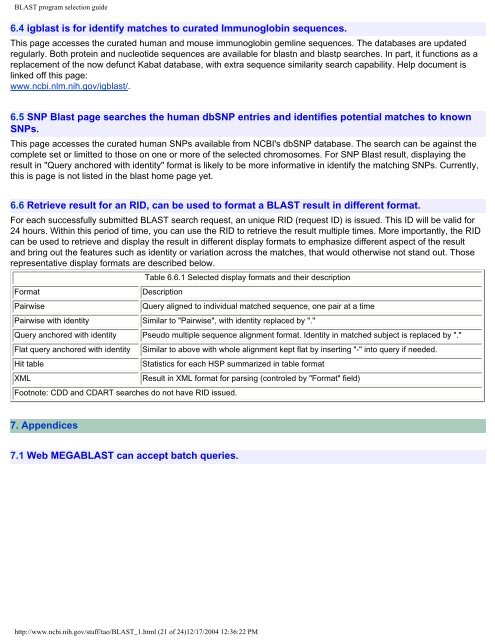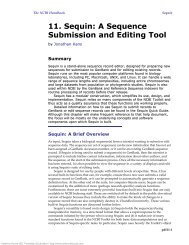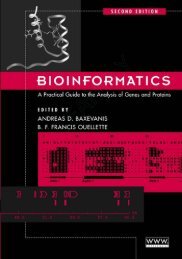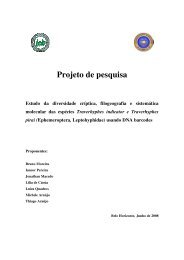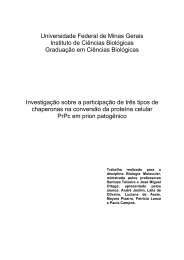BLAST program selection guide - Cromatina
BLAST program selection guide - Cromatina
BLAST program selection guide - Cromatina
Create successful ePaper yourself
Turn your PDF publications into a flip-book with our unique Google optimized e-Paper software.
<strong>BLAST</strong> <strong>program</strong> <strong>selection</strong> <strong>guide</strong><br />
6.4 igblast is for identify matches to curated Immunoglobin sequences.<br />
This page accesses the curated human and mouse immunoglobin gemline sequences. The databases are updated<br />
regularly. Both protein and nucleotide sequences are available for blastn and blastp searches. In part, it functions as a<br />
replacement of the now defunct Kabat database, with extra sequence similarity search capability. Help document is<br />
linked off this page:<br />
www.ncbi.nlm.nih.gov/igblast/.<br />
6.5 SNP Blast page searches the human dbSNP entries and identifies potential matches to known<br />
SNPs.<br />
This page accesses the curated human SNPs available from NCBI's dbSNP database. The search can be against the<br />
complete set or limitted to those on one or more of the selected chromosomes. For SNP Blast result, displaying the<br />
result in "Query anchored with identity" format is likely to be more informative in identify the matching SNPs. Currently,<br />
this is page is not listed in the blast home page yet.<br />
6.6 Retrieve result for an RID, can be used to format a <strong>BLAST</strong> result in different format.<br />
For each successfully submitted <strong>BLAST</strong> search request, an unique RID (request ID) is issued. This ID will be valid for<br />
24 hours. Within this period of time, you can use the RID to retrieve the result multiple times. More importantly, the RID<br />
can be used to retrieve and display the result in different display formats to emphasize different aspect of the result<br />
and bring out the features such as identity or variation across the matches, that would otherwise not stand out. Those<br />
representative display formats are described below.<br />
Format<br />
Pairwise<br />
Table 6.6.1 Selected display formats and their description<br />
Description<br />
Query aligned to individual matched sequence, one pair at a time<br />
Pairwise with identity Similar to "Pairwise", with identity replaced by "."<br />
Query anchored with identity Pseudo multiple sequence alignment format. Identity in matched subject is replaced by "."<br />
Flat query anchored with identity<br />
Hit table<br />
XML<br />
Similar to above with whole alignment kept flat by inserting "-" into query if needed.<br />
Statistics for each HSP summarized in table format<br />
Footnote: CDD and CDART searches do not have RID issued.<br />
Result in XML format for parsing (controled by "Format" field)<br />
7. Appendices<br />
7.1 Web MEGA<strong>BLAST</strong> can accept batch queries.<br />
http://www.ncbi.nih.gov/staff/tao/<strong>BLAST</strong>_1.html (21 of 24)12/17/2004 12:36:22 PM


